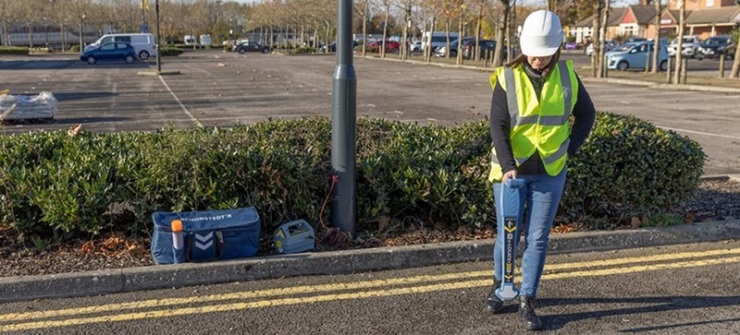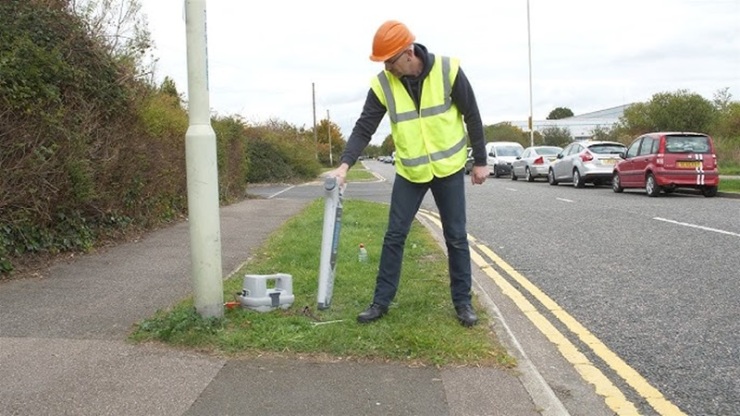Beneath the surface of our cities and landscapes lies a complex network of pipes and cables that power our homes, deliver essential services, and keep our communities connected. Before any construction or excavation work begins, it is imperative to understand the intricacies of this subterranean infrastructure. This is where pipe and cable locators, often referred to as pipeline finders, emerge as indispensable tools. In this comprehensive guide, we’ll explore the critical importance of these locators in mapping underground utilities, delve into their operational mechanisms, and discuss the various types available in the market.
The Significance of Pipe and Cable Locators
Preventing Accidents and Damages:

One of the primary purposes of a pipeline finder and cable locator is to prevent accidental damage during excavation or construction projects. Striking an underground utility not only poses a safety risk but can also lead to service disruptions, costly repairs, and potential environmental hazards.
Compliance with Regulations:
Many regions have stringent regulations regarding excavation and construction activities to ensure the safety of both workers and the public. The use of pipe and cable locators is often mandated to comply with these regulations, making them an integral part of responsible and legal construction practices.
Time and Cost Efficiency:
Accurately mapping underground utilities in advance saves both time and money. Knowing the precise location of pipes and cables allows construction crews to plan their work more efficiently, reducing the likelihood of delays and unexpected expenses associated with repairs.
Environmental Conservation:
Accidental damage to underground utilities can lead to environmental contamination. Pipe and cable locators contribute to environmental conservation by minimizing the risk of leaks, spills, and other hazardous incidents.
How Pipe and Cable Locators Work
Pipe and cable locators operate on the principle of electromagnetic induction. Here’s a simplified explanation of how they work:
Transmitter Unit:
The process begins with a transmitter unit that generates an electromagnetic signal. This signal is introduced into the utility being traced, whether it’s a metallic pipe or cable. The transmitter induces a current in the utility.
Electromagnetic Field:
As the current flows through the utility, it creates an electromagnetic field around it. This field radiates outward and can be detected on the surface.
Receiver Unit:
The receiver unit is used above ground to detect the electromagnetic field. By moving the receiver across the surface, operators can trace the path of the underground utility.
Visual and Audible Indicators:
Modern pipe and cable locators are equipped with visual and audible indicators. The receiver provides real-time feedback, indicating the strength of the signal and helping operators pinpoint the location and depth of the utility.
Types of Pipe and Cable Locators

Electromagnetic Locators:
These locators use the principles of electromagnetic induction to detect metallic pipes and cables. They are highly effective for tracing conductive materials and are commonly used in urban areas where utilities are densely packed.
Ground Penetrating Radar (GPR):
GPR locators use radar pulses to create an underground image of utilities. They are effective for detecting non-metallic pipes and can provide detailed information about the depth and composition of the subsurface.
Radio Frequency Locators:
Ideal for locating both metallic and non-metallic utilities, radio frequency locators work by emitting radio signals that are reflected back by underground objects. They are versatile and suitable for a wide range of applications.
Acoustic Pipe Locators:
These locators use sound waves to detect the location of pipes. They are particularly useful for finding non-metallic pipes and can be employed in situations where other methods may be less effective.
Choosing the Right Pipe and Cable Locator
Utility Type:
Consider the types of utilities you need to locate. Some locators are specialized for metallic pipes, while others are designed to detect non-metallic cables. Choosing the right tool for the specific utility type is crucial.
Depth Range:
Different locators have varying depth capabilities. Assess the depth of the utilities in your work area and select a locator that can effectively reach and trace them.
Environmental Conditions:
The environment in which you’re working plays a significant role. Consider factors such as soil type, moisture levels, and interference from nearby structures. Some locators may perform better in certain conditions than others.
Ease of Use:
Operator proficiency is key to the accurate use of pipe and cable locators. Choose a model that is user-friendly, provides clear feedback, and offers training and support.
Conclusion
In the intricate dance of construction and excavation, the importance of understanding what lies beneath the surface cannot be overstated. Pipe and cable locators, often referred to as pipeline finders, serve as the guiding lights in this subterranean exploration. By preventing accidents, ensuring regulatory compliance, and promoting time and cost efficiency, these locators contribute to the responsible and sustainable development of our urban and rural landscapes. As technology continues to advance, the evolution of pipe and cable locators will undoubtedly enhance our ability to navigate the depths and complexities of the underground world.